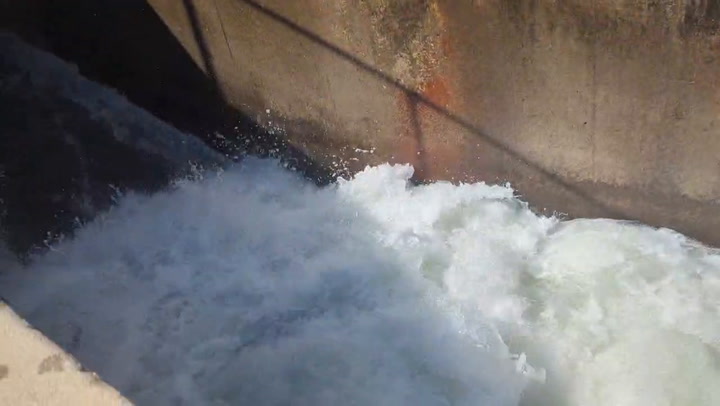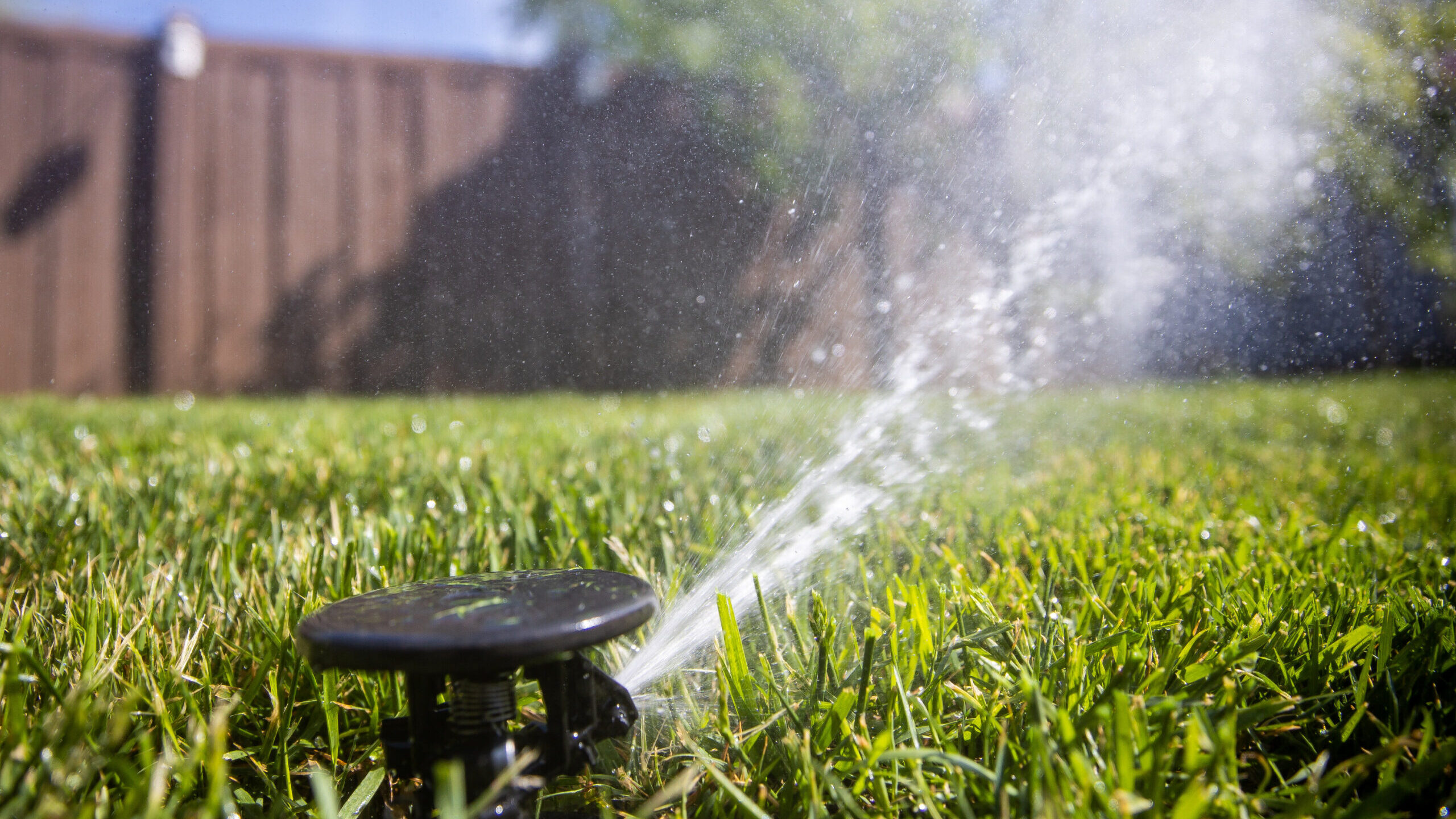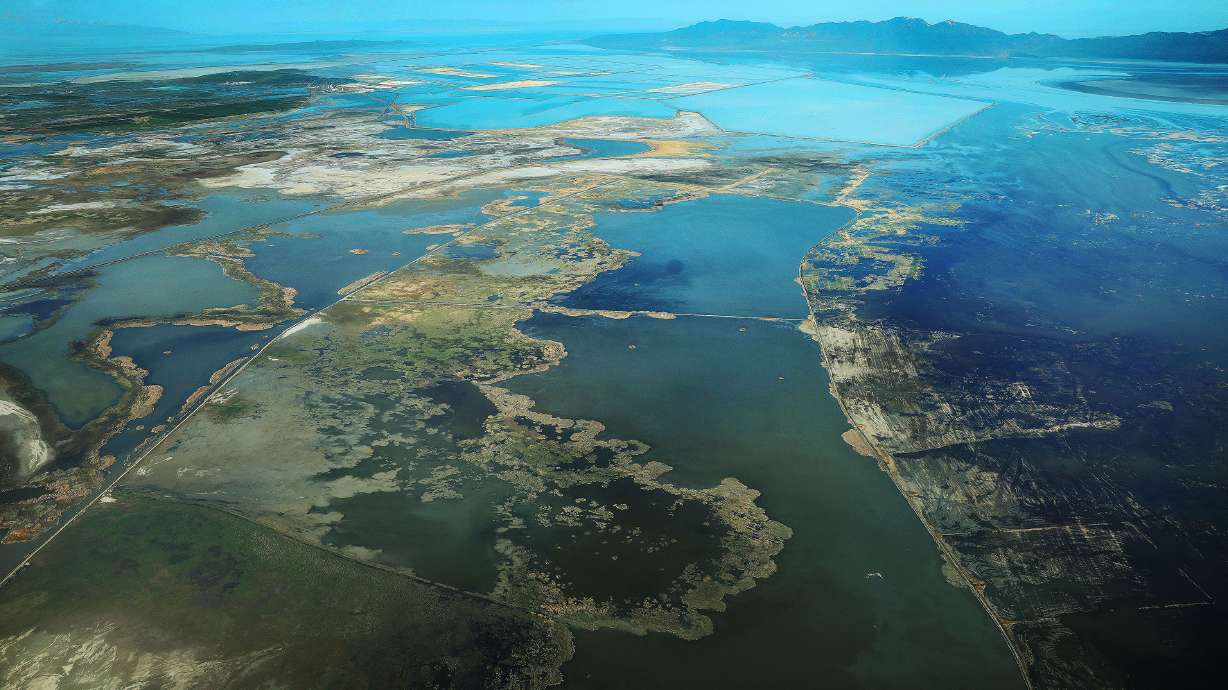UTAH DROUGHT
A dusty tale in California and words of wisdom for Utah as the Great Salt Lake shrinks
Oct 11, 2022, 6:29 AM

The Los Angeles aqueduct skirts the Eastern Sierra near Lone Pine, California, on Thursday, Aug. 11, 2022. (Spenser Heaps, Deseret News)
(Spenser Heaps, Deseret News)
This article is published through the Great Salt Lake Collaborative, a solutions journalism initiative that partners news, education, and media organizations to help inform people about the plight of the Great Salt Lake.
Owens Dry Lakebed, Calif. — The Los Angeles Department of Water and Power began siphoning the waters of the 110-square-mile Owens Lake in 1913. Within 13 short years, the California lake went dry.
The water helped build the then-fledgling city of Los Angeles, but left residents in the hills of Owens Valley choking on the dust left behind as the utility siphoned the waters from its tributaries and built a massive aqueduct. Winter storms whipped up that dust, laden with harmful metals, and soon put Owens Lake on the map for being the source of the nation’s worst dust pollution.
The story of Owens Lake and its sister lake to the north, Mono, prompted a group of Utah media to travel to the area this summer to glean from the lessons, the failures along the way, and what the take home should be for the Great Salt Lake.
Today, California’s Owens Lake holds a hopeful message for Utah and the millions of people living just a few miles from their own terminal lake’s drying shores. It shows the inevitable air quality problem can be solved. We just need to figure out how to pay for it, and whether we have the willpower.
The long march towards progress
On a tour of the Owens Lake remediation site, Phill Kiddoo kneeled on a sandy playa, inspecting a blanket of salt grass drying under the hot summer sun.
Despite a pummeling and persistent wind, the soil didn’t budge, which is exactly what Kiddoo likes to see. Kiddoo knows dust: He is the air pollution control officer for Great Basin Unified Air Pollution Control District, charged with ensuring the region’s air quality meets federal standards.
“It’s trial and error, to some extent” figuring out how to mitigate such an expansive source of dust, Kiddoo said.
Two decades and $2.5 billion spell progress, however.
Paul Liu, manager of the Owens Lake dust mitigation program for LADWP, is looking forward to what comes next.
“We believe we have a strong case for attainment to allow us to move into the maintenance mode,” he said, “and we will be here for perpetuity.”
The utility has reduced Owens Lake’s dust, Liu said, to the extent it may be in sight of reaching requirements by regulatory authorities like the U.S. Environmental Protection Agency. He called it an “exciting time.”
But as it goes with air pollution, you are either in compliance or not.
As Kiddoo explained, a hotspot at the lake’s center may blow hundreds of tons of emissions, but its impact on the shoreline might meet federal standards.
“Whereas a very small source area near the edge of the lake may have only a couple of tons of emissions,” Kiddoo said, “but still cause (an air quality) violation.”
Still, it’s satisfying to see the progress made so far, he said.
Conquering the dust problem required a holistic approach of “figuring out what the lake wants to be … Some areas want to grow vegetation: They’re sandy, they’re less salty. Other areas are more salty and have lots of clay, which is really good for brine.”
The measures look like a weird puzzle of contrasting geology.
Some sections have a vast sea of gravel that absorbs the desert sun to an uncomfortable degree. Some spots are piled high with furrows of mud. Some have big puddles of smelly dead brine shrimp, where the shallow flood water evaporated and became overly salty. Some have meadows of grass and shrubs bending to the wind, or ponds where American avocets snack on brine flies.
It’s all delineated by winding roads that rise above the mitigation, a steady stream of work trucks and endless, active construction.
It has been a heavy lift, though, with fits and starts, billions of dollars and impressive engineering to arrive at best strategies. The experiments have tamped dust across a 48.6-square-mile area, with the utility company playing the villain and the hero as it worked to mitigate the actions of its predecessors.
To put that in perspective, the dust control effort covers an area roughly the size of San Francisco. It took 4,200 miles of pipeline alone.
Are Utah leaders on alert?
Plagued by diversions, drought and human-caused climate change, the Great Salt Lake — which is 12 times larger than Owens Lake in California — has sunk to its lowest recorded levels and is half its historical average volume. More than 800 square miles of its lakebed sits exposed, raising concerns that the issues that created the Owens Lake situation might repeat themselves here.
Utah’s congressional delegation, Utah Gov. Spencer Cox, the Utah Legislature, environmental advocates, industry and others are working hard not to go down that path.
“We don’t want that,” said Rep. Blake Moore, R-Utah, who got legislation studying saline lakes in the West recently passed in the House.
Lawmakers threw half a billion dollars in new money at water conservation savings this past legislative session, but House Speaker Brad Wilson, R-Kaysville, said it has become clear to him that more needs to be done to save the dwindling Great Salt Lake.
Wilson has said Utah needs to get ahead of its shrinking Great Salt Lake problem and launch preemptive measures so it never gets to a point like that of Owens Lake.
Some uncomfortable decisions likely loom, he added, as competing interests seek to either continue business as usual when it comes to diversions or become entrenched in inflexibility when it comes to allowing more of their water to flow to the Great Salt Lake.
Owens would not want to be Utah
When Liu, the L.A. utility company’s dust mitigation program manager, heard that Great Salt Lake already has 800 square miles of exposed lakebed and is a significant contributor of dust along the northern Wasatch Front, his eyes widened and his jaw dropped.
It was clear he would not want Utah’s problem.
“I can’t imagine you guys at Great Salt Lake,” he said, stressing how important it is to get everyone at the table, early on.
“You really have to understand the full scope of what you have at the beginning. I know you can only crystal ball so much, but the more time you can spend planning, the better off you will be. It looks like you are at the beginning, where we were 20 years ago.”
What happens when the dust sources move?
One of the biggest conundrums facing the utility as it comes closer to air quality attainment is all the sand that blew out of the lakebed and landed beyond its shores. The dust formed dunes that are themselves a source of pollution. But those dunes are beyond the utility’s settled mitigation area, which is causing tensions to flare up with regulators.
And as the region becomes more arid, regional dust is becoming more of a problem for all kinds of reasons. With that in mind, Liu had some advice for the Utah scientists, lawmakers — and, likely, lawyers — who need to grapple with their own emerging sources of dangerous dust.
“I understand this is different from what you’re dealing with in Salt Lake,” Liu said. “You’re just at the beginning. But perhaps moving forward, it’s good to define what the issue is upfront instead of leaving it open-ended.”
Kiddoo warned that the Wasatch Front faces a scaled-up and expensive problem if it waits until the Great Salt Lake becomes an environmental disaster like Owens Lake.
But for Utah, he emphasized, it’s not too late.
“The good news for Great Salt Lake,” Kiddoo said, “is that there’s still a lake.”
Related reading:
- The saline lakes of the Great Basin and why they are in trouble
- Goals of the Great Salt Lake Collaborative, a solutions journalism initiative
- Great Salt Lake sinking levels could impact bird migration













